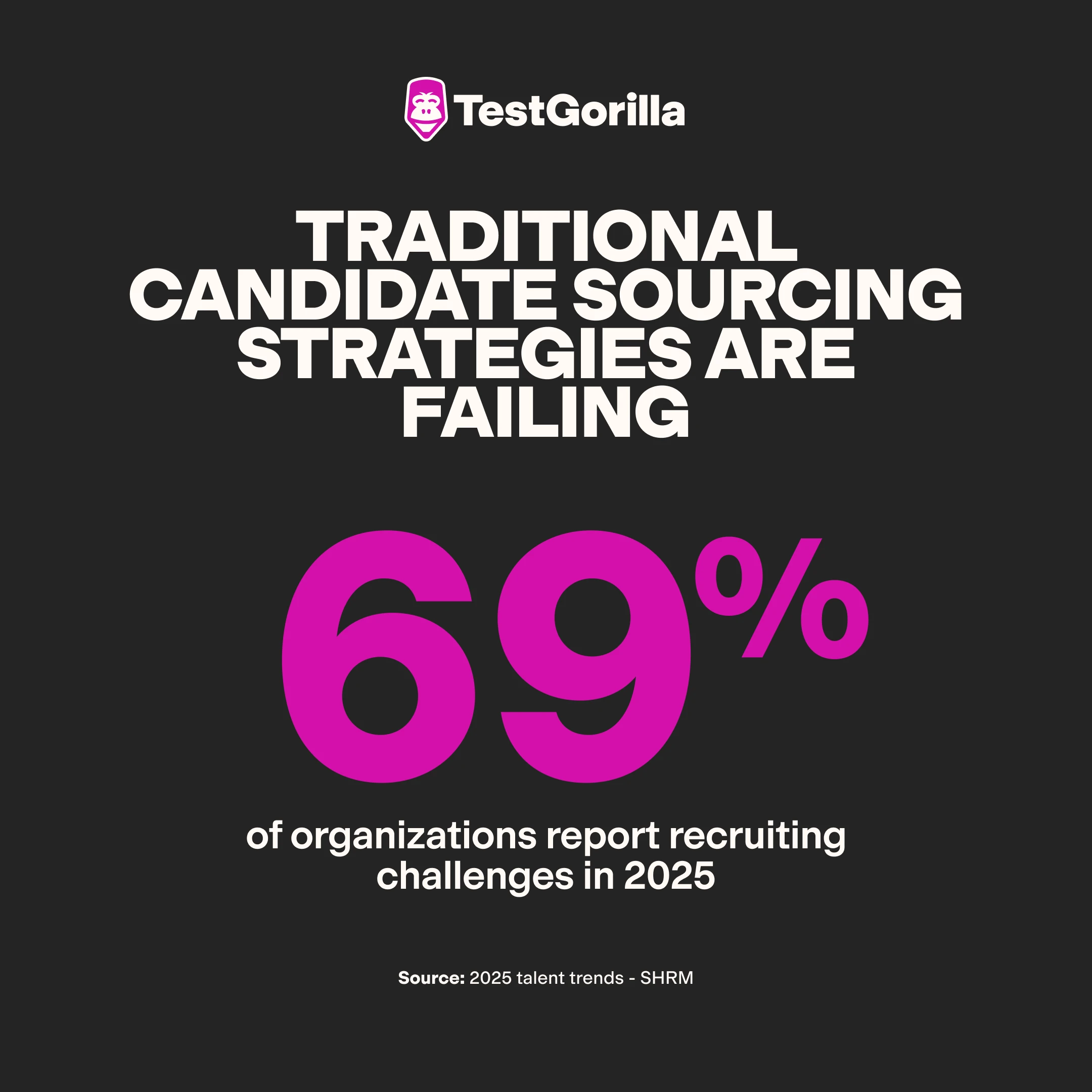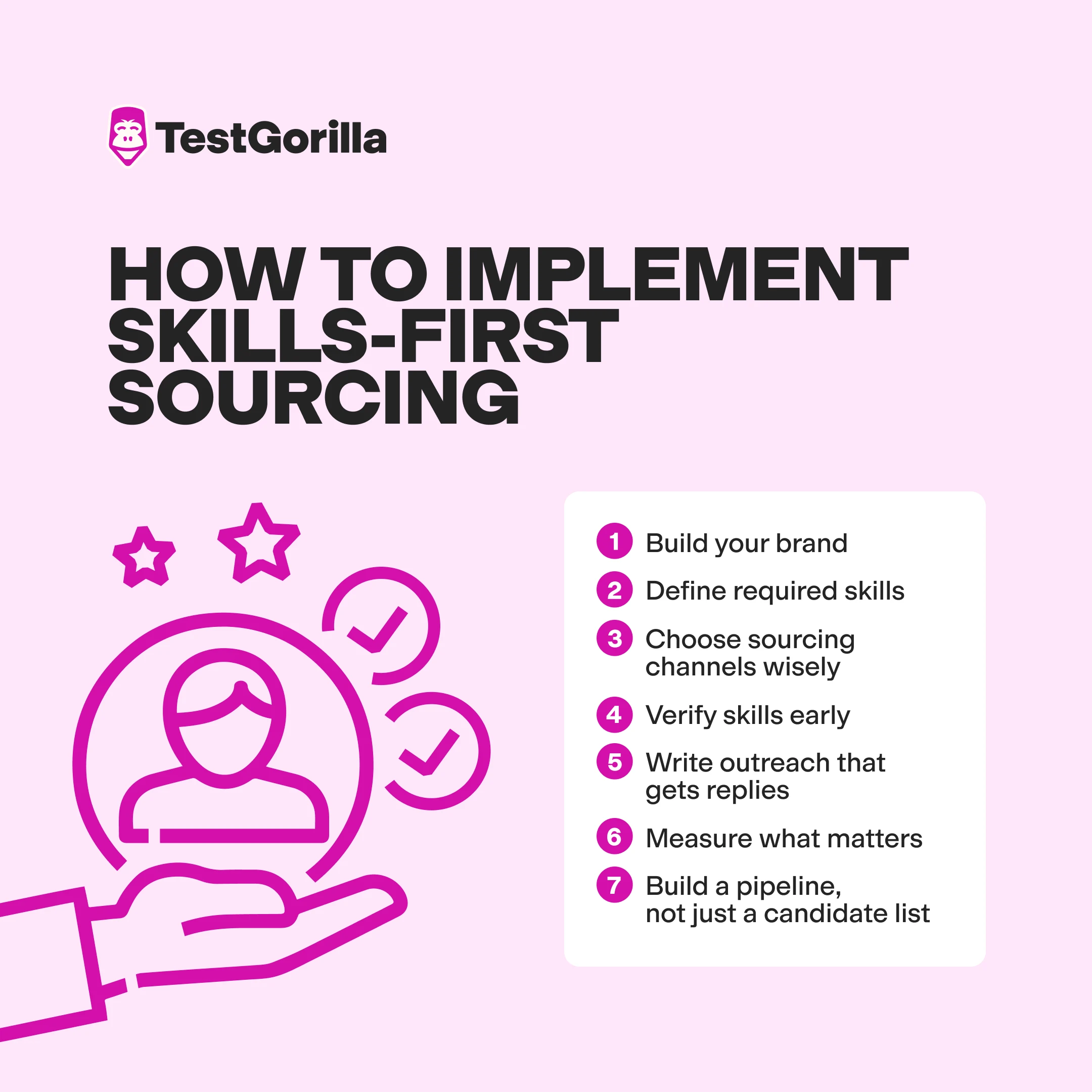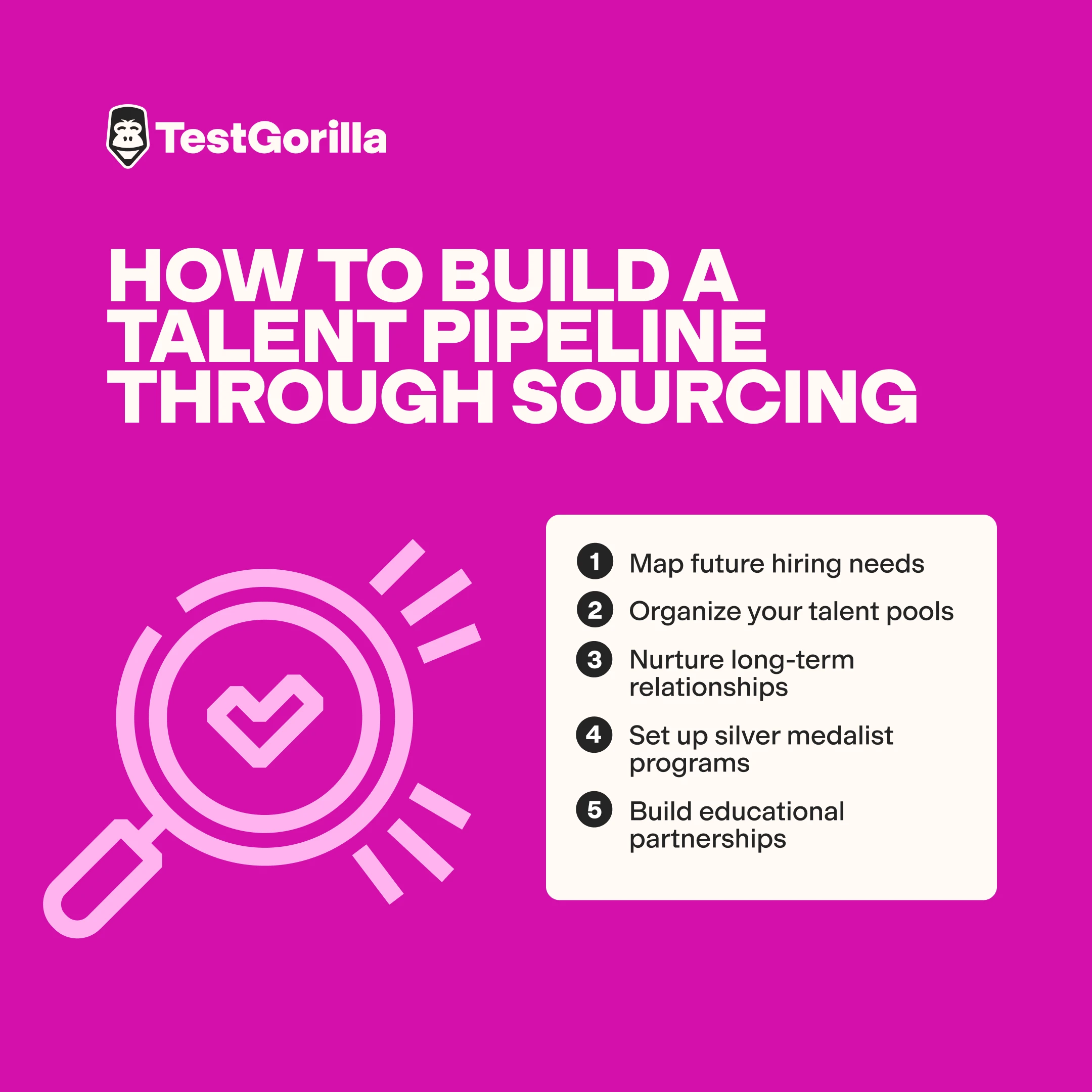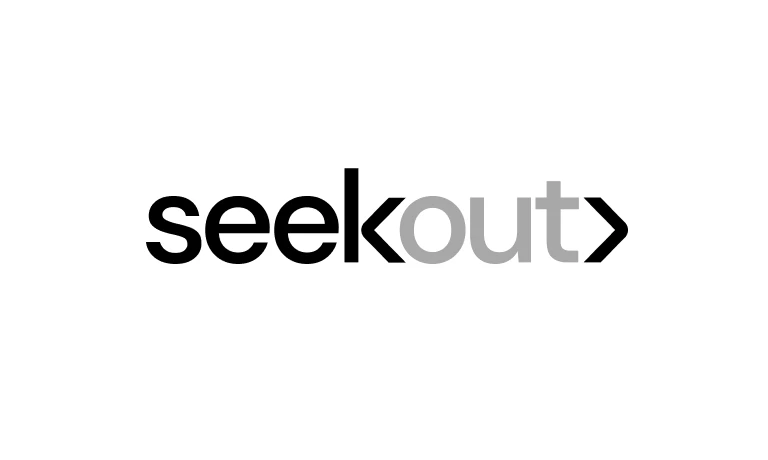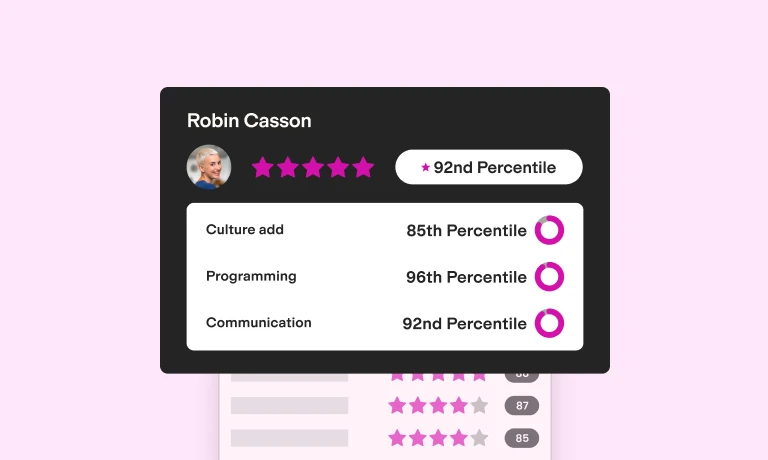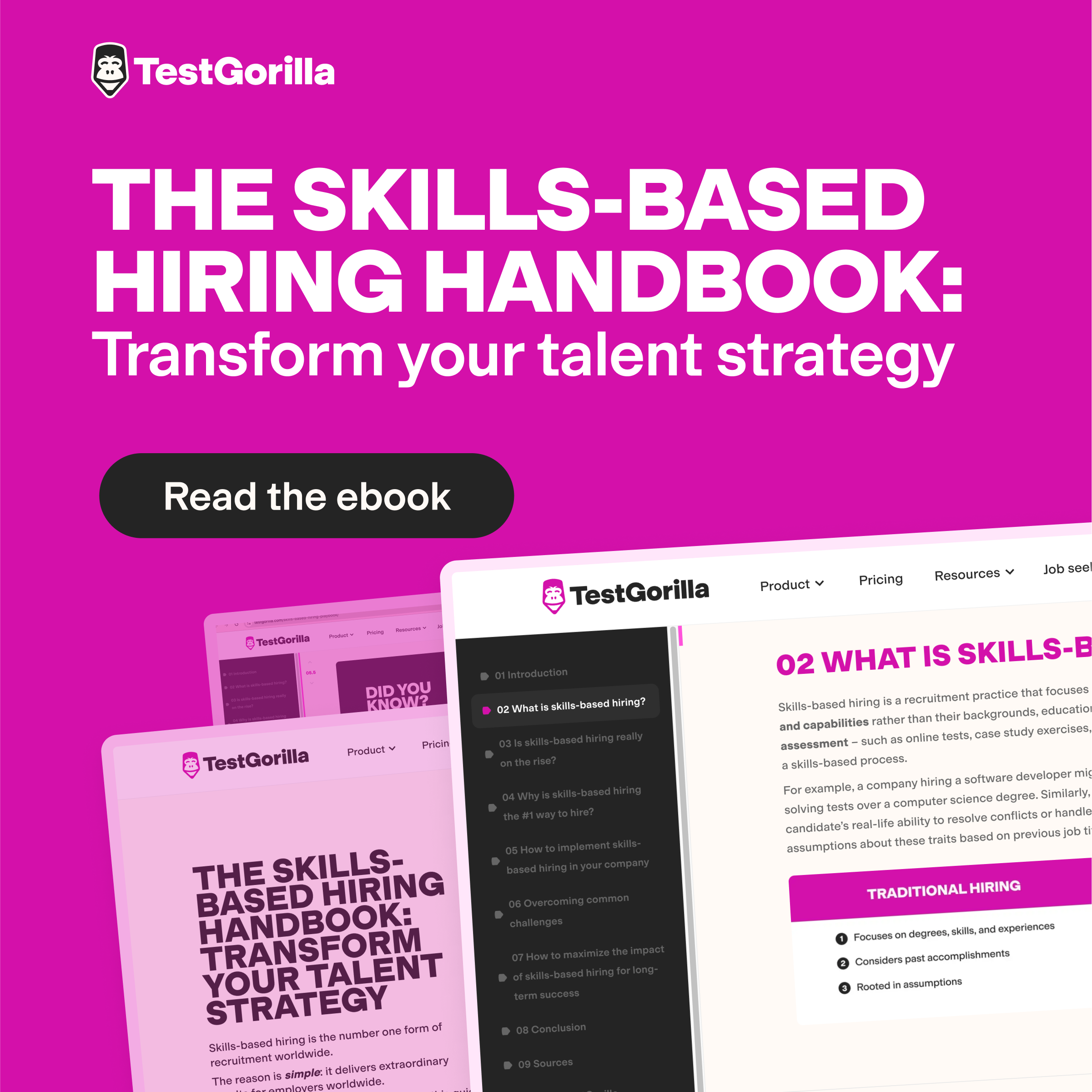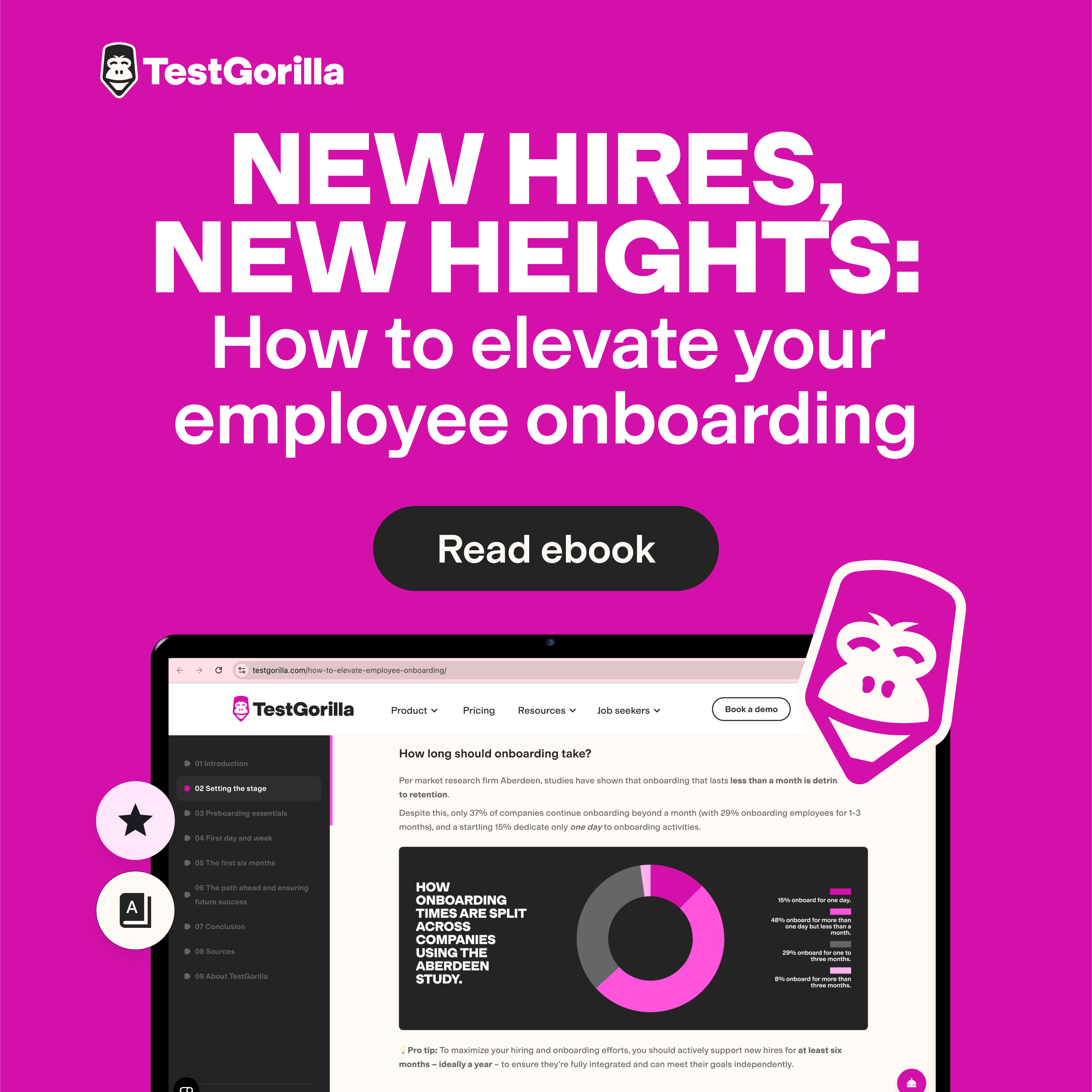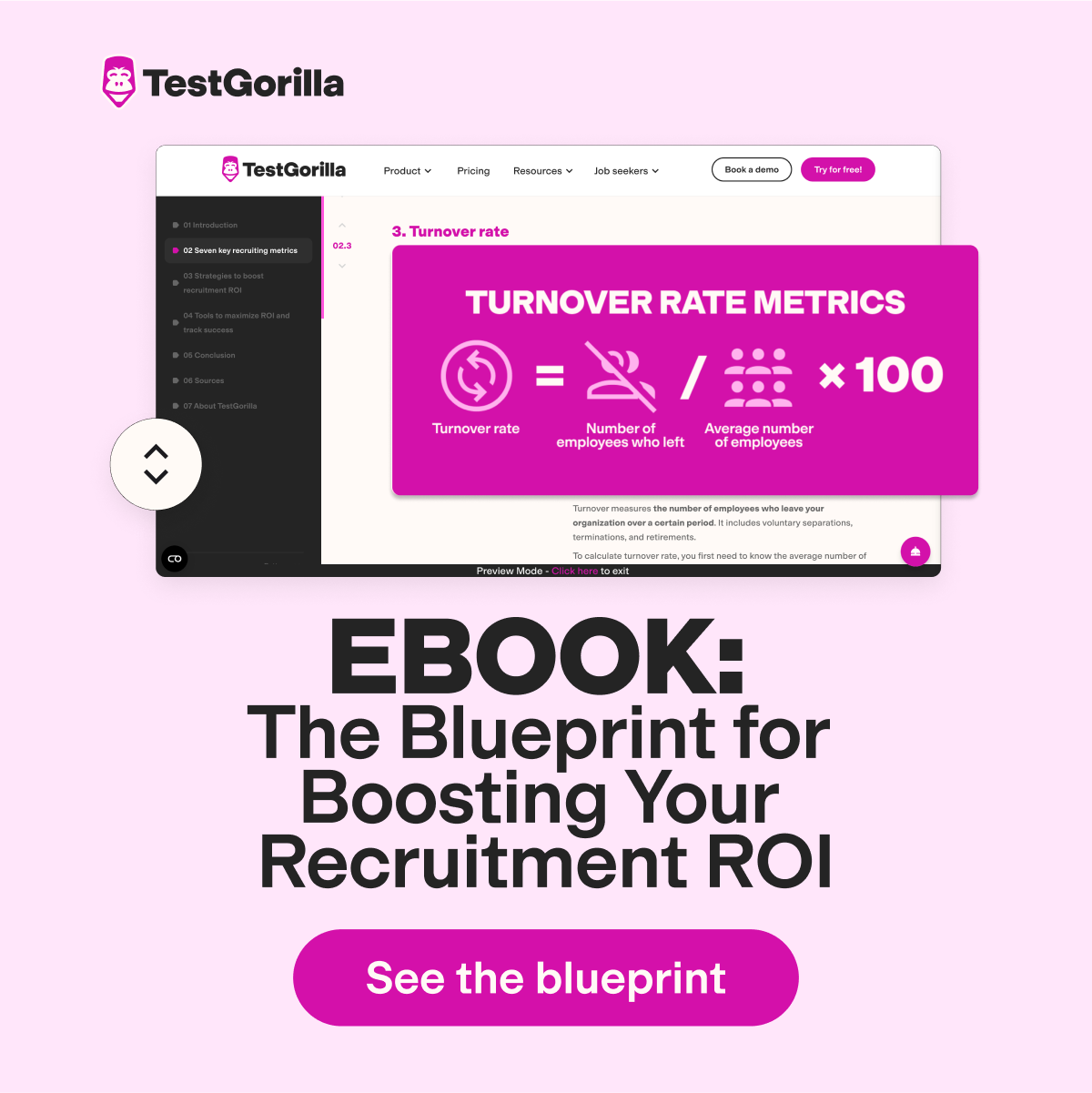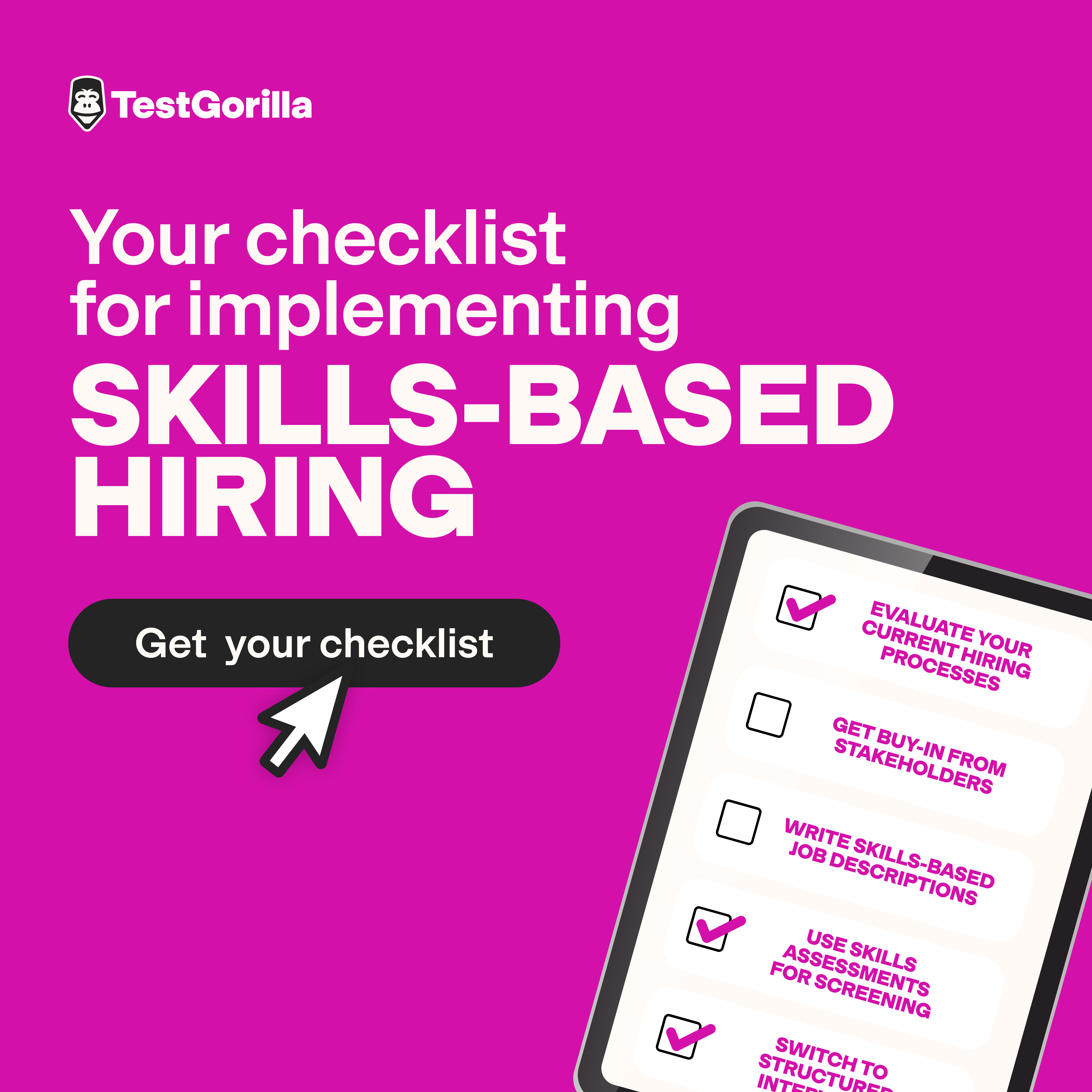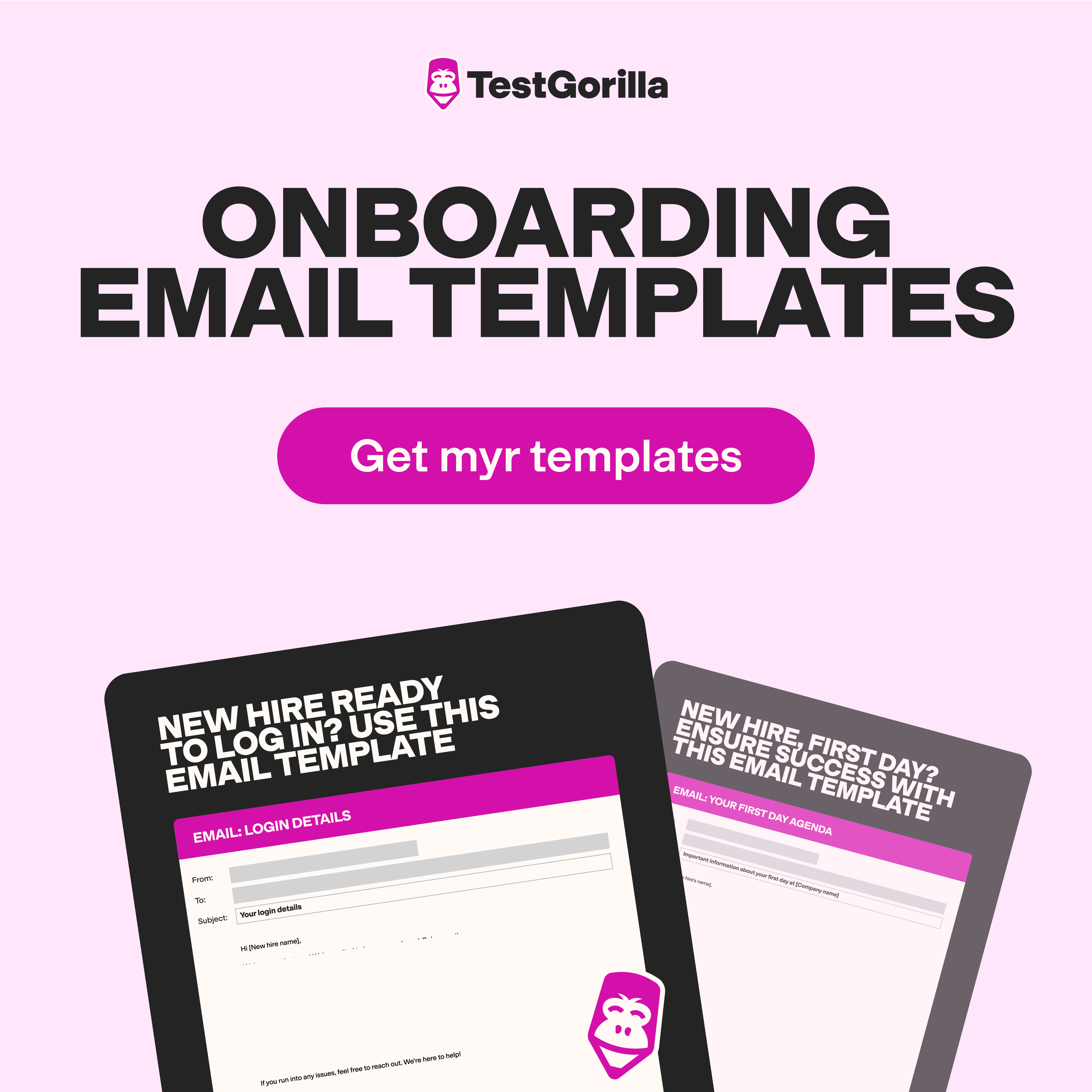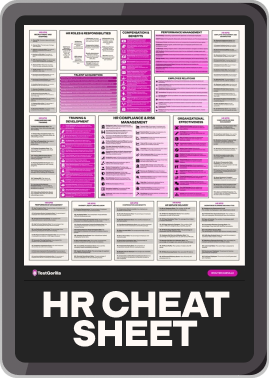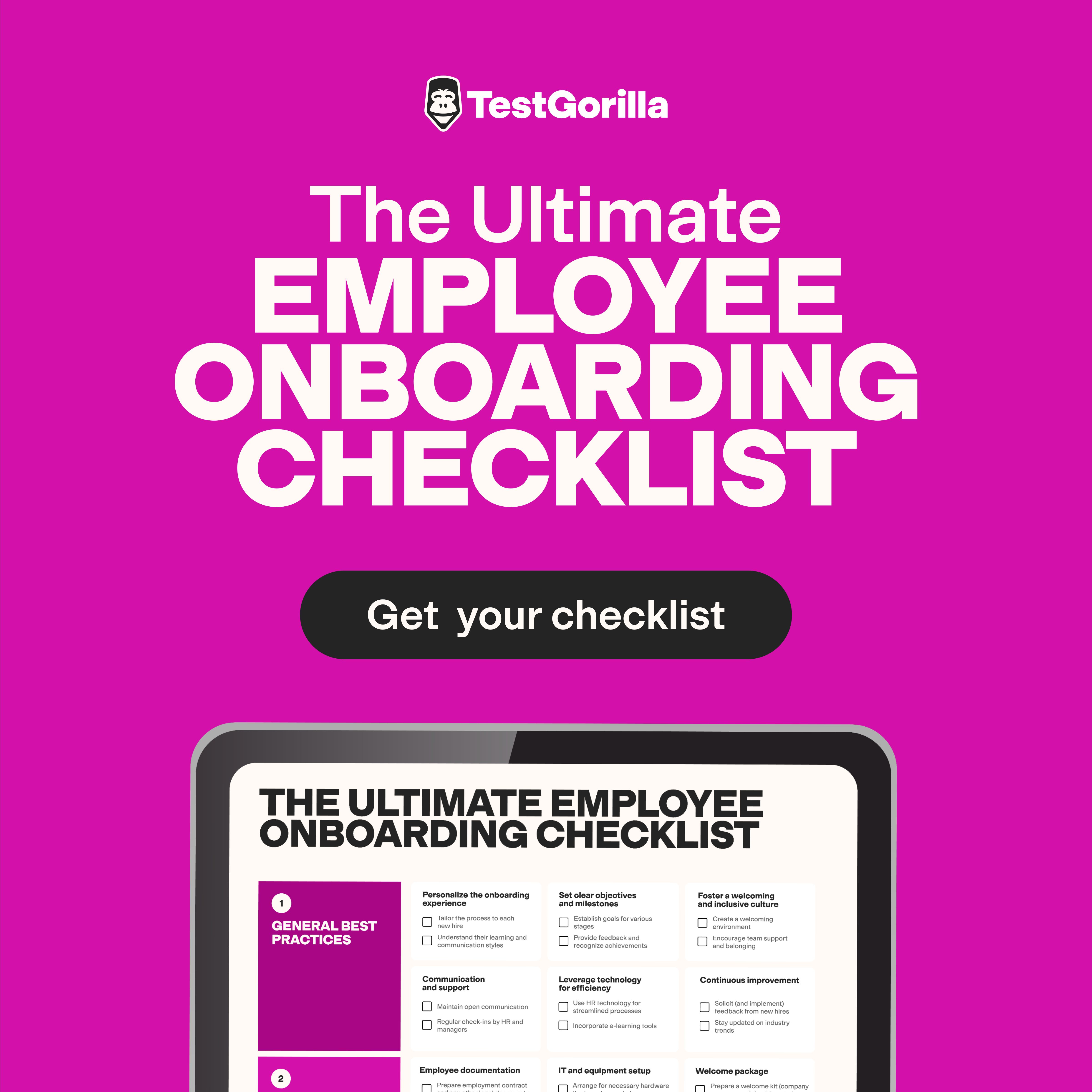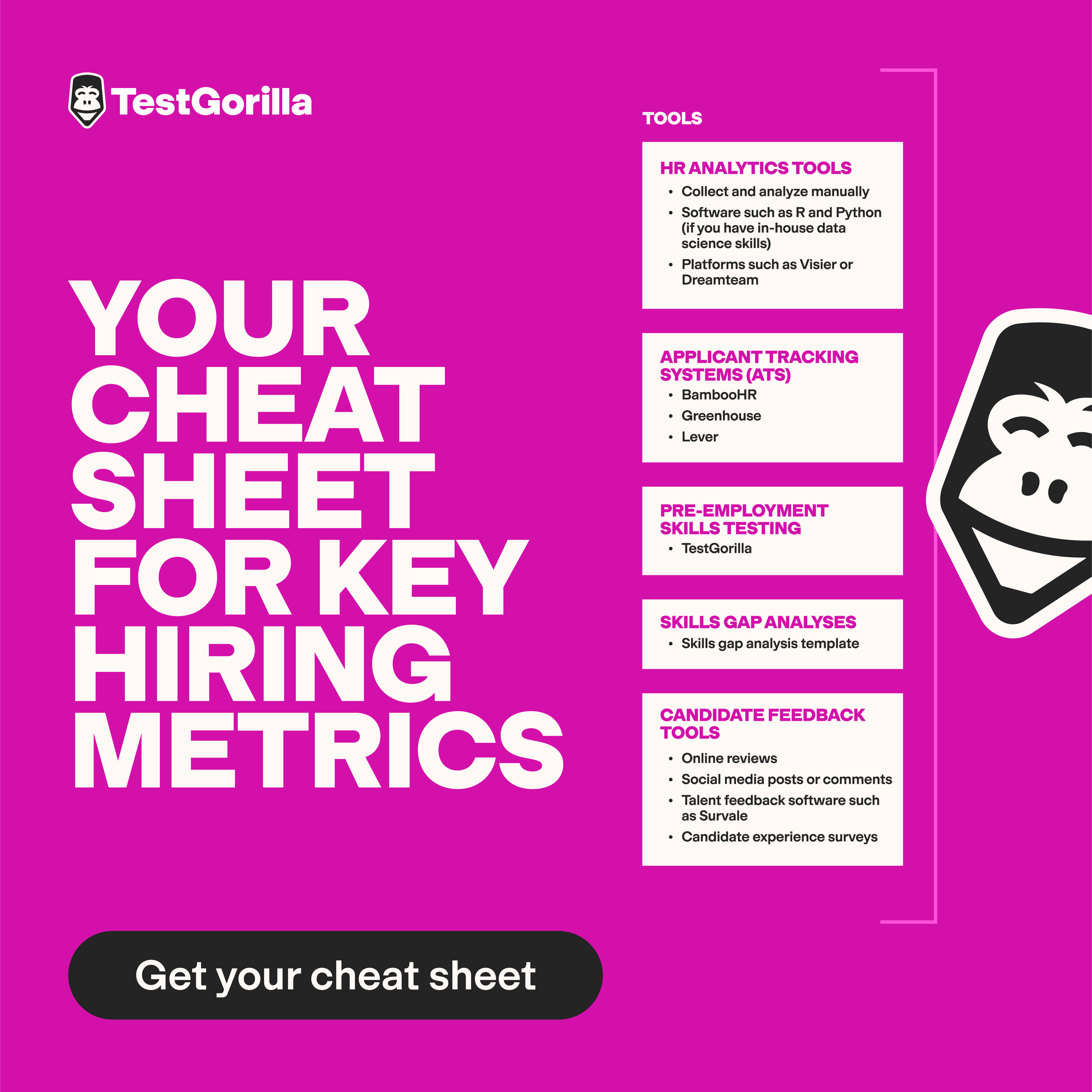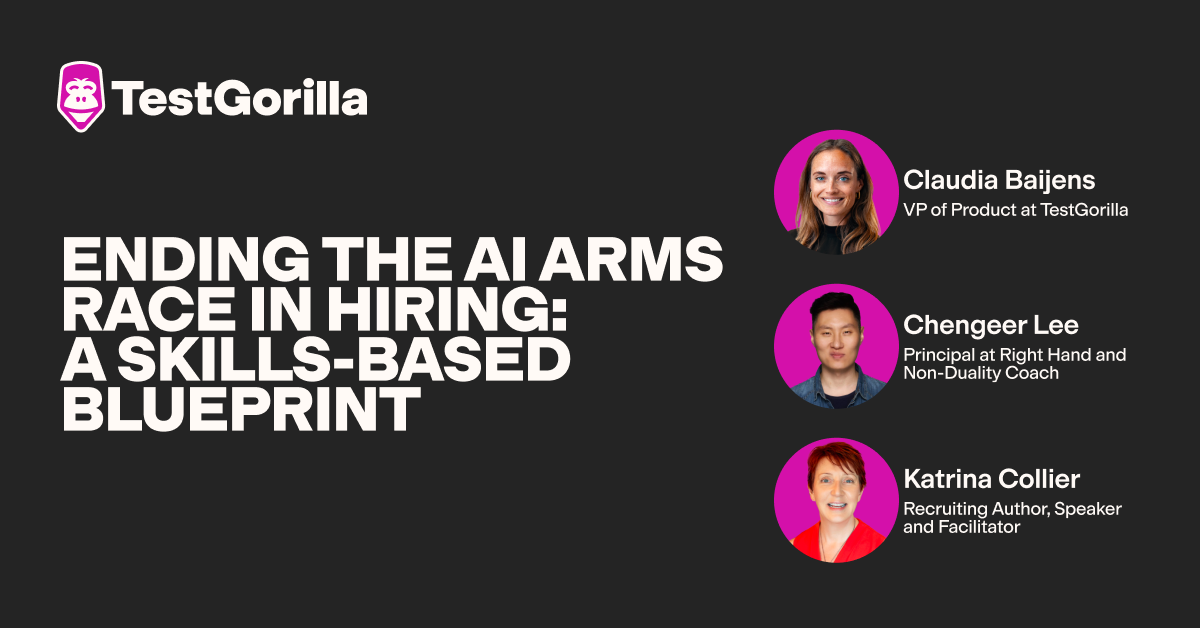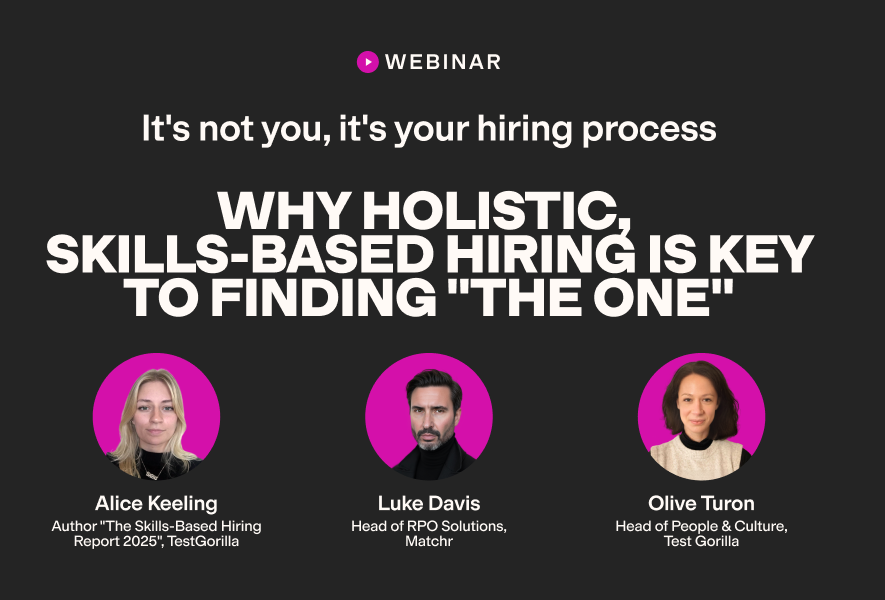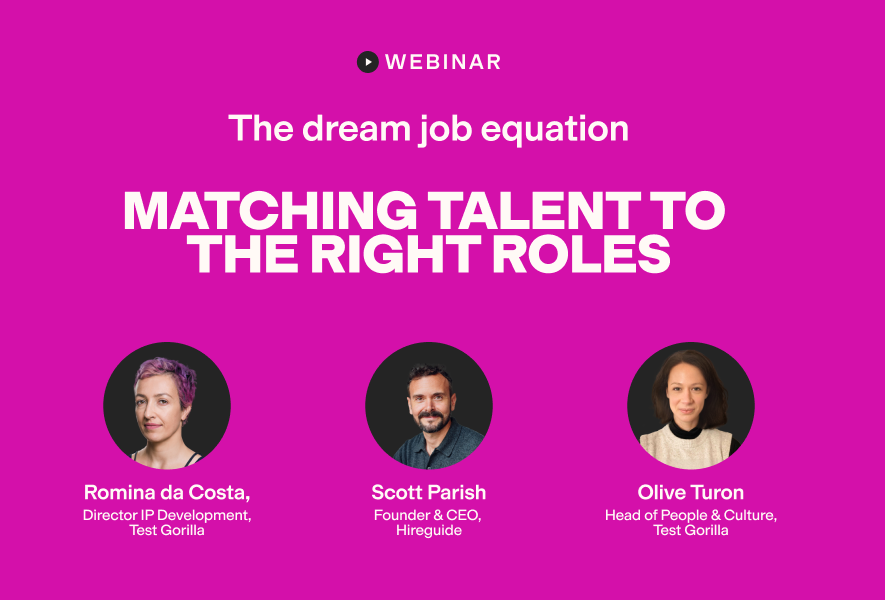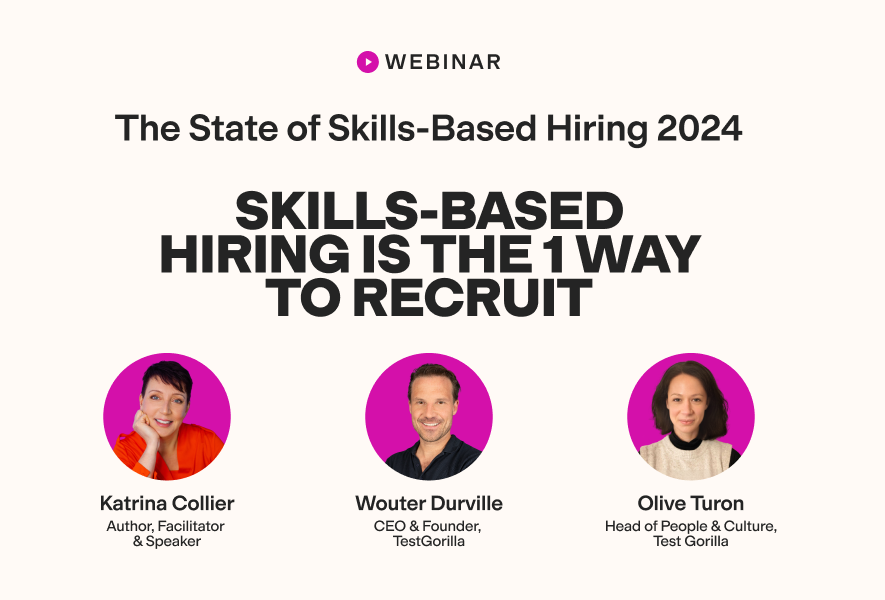You posted the job. You waited. Applications rolled in.
And then you spent three weeks discovering that half the candidates lied about their skills, a quarter ghosted you after the first interview, and the rest weren't the right fit.
It's not just you; 63% of employers told TestGorilla that finding great talent is more challenging than last year, and 70% of job seekers say it's harder to find a job. It's clear that traditional recruiting isn't connecting the right people with the right jobs.
Thankfully, the future of employee sourcing doesn't look like this. It's efficient, skills-first, data-backed, and bias-free. No more guessing games. We'll show you how to build a sourcing strategy that actually works.
What is candidate sourcing in recruitment?
First off, what's the difference between candidate sourcing and recruiting anyway? Think of it like this: sourcing finds 'em and recruiting closes 'em. Sourcing is the discovery and attraction of great talent, while recruiting is all about screening, interviewing, and hiring the right picks.
Instead of posting an opening and praying someone bites, with talent sourcing, you actively seek out talent where it lives, whether that's through targeted outreach or nurturing your professional network. You identify and engage with great candidates before they even think about applying to your jobs, and you reach highly skilled people who might be open to the right opportunity.
Dr. Erika Petersen at UAMS discovered something interesting about sourcing executive talent through her medical research collaborations:
"When I work with colleagues in interventional pain, neurology, and psychiatry on deep brain stimulation research, I'm constantly meeting brilliant residents and fellows who aren't actively job hunting but are passionate about advancing neuromodulation. These collaborative research projects act as extended interviews – I see how candidates think through complex problems over months, not minutes."
This type of proactive sourcing means building relationships with qualified candidates months or years before you need them.
Why traditional candidate sourcing strategies fail
SHRM research shows 69% of organizations report recruiting challenges in 2025 – that's no improvement since 2016! The reasons are systemic, touching everything from the talent market to the very tools you use.
Problem 1: The qualified talent pool is shrinking
The first challenge is a simple matter of supply and demand. The Georgetown University Center on Education and the Workforce reports the US economy faces a deficit of 5.25 million workers with postsecondary education through 2032. At the same time, 18.4 million experienced workers are retiring while only 13.8 million qualified younger workers are entering the workforce. You're fishing in a shrinking pond.
Problem 2: Traditional methods are inefficient and measure the wrong things
Not only is the pool smaller, but the way most recruiters search is wasteful. According to Gem's 2025 Recruiting Benchmark Report, job boards generate 49% of applications but only 24.6% of hires. This focus on volume is a core flaw.
As Sales Director Allan Hou explains, success shouldn't be measured by the size of your pipeline. “The best approach to gauge sourcing return on investment is not in terms of pipeline size, but in terms of speed to a qualified shortlist," he says. "The sourcing process that yields 300 names but takes four weeks to filter is yielding a lower return than one that yields a 20-name shortlist and takes five days to filter.”
Problem 3: You can’t verify skills from a resume
The information you do get is fundamentally unreliable. TestGorilla's Unlocking Sourcing Success report reveals that 58% of sourcing professionals can't tell if candidates actually have the skills listed on their resumes. The rise of AI-generated content makes this worse.
Wynter Johnson, Founder and CEO of Caily, told us, "Any time I'm soliciting applications or resumes, I know I'm going to have to wade through a sea of AI."
Problem 4: You’re left guessing on culture fit
Soft skills can be listed extensively, but there's no way to verify them from a resume alone. TestGorilla found 47% of sourcing teams can't tell if a candidate fits their culture. You can see where someone worked, but you can't see if they thrive in ambiguity, need structure, or are energized by collaboration. You're forced to rely on gut feelings instead of evidence.
This is why more companies are moving away from traditional recruitment platforms to modern candidate sourcing.
The best insights on HR and recruitment, delivered to your inbox.
Biweekly updates. No spam. Unsubscribe any time.
From resumes to real skills: candidate sourcing has evolved
The numbers don't lie. Skills-first recruiting is five times more predictive of job performance than hiring based on education and twice as predictive as hiring based on work experience. That's according to McKinsey research. It's a complete transformation in how we identify talent.
Moving beyond resumes and credentials
So let's talk about why this works. Traditional hiring uses proxies. We assume a computer science degree means someone can code. We assume 10 years of experience means expertise. We assume working at a prestigious company means competence. But these assumptions constantly fail.
Consider what you're missing when you filter by educational qualification alone. The self-taught programmer who's been shipping incredible code for years. The customer service rep who taught themselves data analysis to solve problems. These people have proven skills. They simply lack the credentials that traditional sourcing methods typically focus on.
Opportunity@Work research shows removing degree requirements unlocks access to more than 70 million US workers who are Skilled Through Alternative Routes (STARs).
AI is transforming how we find talent
A new era of AI sourcing has arrived, and it's reshaping everything about how we find skilled people.
SHRM's 2025 Talent Trends report shows AI adoption in HR departments jumped from 26% in 2024 to 43% in 2025. Furthermore, 65% of employers told TestGorilla they already use AI as part of their recruitment process.
This is because AI sourcing uncovers hidden talent while dramatically cutting time-to-hire. You can now run comprehensive searches that would have taken weeks in minutes. You can analyze thousands of profiles with the thoroughness you reserved for dozens.
Thanks to AI-powered semantic search, modern headhunting has evolved beyond simple candidate searches. You can ask for "a procurement manager who's worked at both startups and enterprises," and AI finds candidates matching that profile, even if they describe their experience completely differently. This matters because language is a messy thing. One company's "Software Engineer" is another's "Developer" is another's "Programmer."
Great candidates often use different terminology than recruiters search for. AI bridges this gap. It understands that "reduced costs by 30%" and "improved efficiency significantly" might describe the same achievement. It knows "led a team of 5" and "managed a small group" mean the same thing.
AI helps uncover highly qualified people that traditional searches miss completely. Moreover, AI doesn't particularly care about names, schools, or photos, unlike humans, who are unconsciously biased. It evaluates based on skills and experience.
It's not perfect, mind you; systems trained on biased historical data can perpetuate patterns. For example, if your company has historically hired from certain schools, AI could learn that pattern and reinforce it. Smart data-driven recruiting keeps humans in the loop. You shouldn't be looking to replace recruiters with AI entirely. These tools should be used to augment your human judgment with their machine efficiency.
Your skills-first candidate sourcing roadmap
With all these proven benefits, you're probably wondering how to build a direct sourcing machine that cuts costs and lands you better talent. This step-by-step playbook for implementing skills-first sourcing will put you on the right track.
Step 1: Build your employer brand (what makes your company attractive)
Before you reach out to anyone, it's good to ask yourself: Why would someone want to work for you? If you can't answer that clearly, neither can your candidates.
Your employer brand is what people think and say about working at your company. According to a LinkedIn Study, a strong employer brand can reduce cost-per-hire by 50% and increase qualified applicants by 50%. So, it’s worth the effort.
Here's how to build a brand that attracts talent:
Show real work: Share actual projects your team is working on. What problems are you solving? What technologies are you using? GitHub repos, blog posts, case studies – these give candidates concrete evidence of what they'd be doing.
Let your team speak: LinkedIn reports that job seekers trust a company's employees three times more than the business itself to provide accurate information on what it's like to work there. So, try to encourage your team to share their work on LinkedIn, write technical blog posts, or speak at industry events. One authentic post from an employee about solving a tough problem is worth more than a dozen "we're hiring" announcements.
Be honest about your culture: Don't say you're "like a family" if you're actually fast-paced and demanding. Don't claim "work-life balance" if everyone's on Slack at 10 pm. Authenticity matters more than sounding perfect. TestGorilla's research shows 52% of job seekers have been in roles where they had the technical skills but weren't a cultural fit – and a quarter of them quit because of it.
Highlight growth paths: Show how people develop in your company. Real examples of internal promotions, skill development, and career progression matter more than generic promises about "opportunities for growth."
You're not trying to appeal to everyone. You should be clear about what your company is about, so the right people want to talk to you. When you start sourcing, you want candidates to have a positive impression of your company already, or at least be curious enough to respond.
Step 2: Define your skills requirements (not your wish list)
Have you noticed that most job descriptions these days are fantasy wish lists? "10 years experience, Master's degree, expert in 15 technologies, proven track record of..." Stop. What does someone actually need to succeed in this role?
Map out exactly what skills you need before sourcing anyone. Not degrees. Not years of experience. What actual abilities make someone successful? This requires a bit of honesty about what's essential versus what's nice to have.
Start with job analysis. Break the role into daily, weekly, and monthly tasks. What does this person actually do? Not what you wish they would do if your company were different. What will they actually spend their time on?
For a marketing manager, for instance, your first instinct might be to require an MBA and 10 years of experience. But break down the actual job:
Daily tasks:
Analyze campaign performance data (requires: intermediate SQL, Google Analytics)
Review and edit content (requires: strong writing skills, understanding of SEO)
Coordinate with design team (requires: basic design principles, clear communication)
Weekly tasks:
Run team meetings (requires: facilitation skills, project management)
Report to leadership (requires: data visualization, executive communication)
Manage vendor relationships (requires: negotiation, budget management)
Monthly tasks:
Develop campaign strategies (requires: market research, creative thinking)
Manage budget allocation (requires: financial planning, ROI analysis)
Hire and train team members (requires: interviewing skills, teaching ability)
Now you have real requirements. The actual skills someone must have to succeed. You'll use these to find the talent you need from your chosen sourcing channels.
Step 3: Strategically choose your sourcing channels
Knowing where to find candidates is as important as knowing what skills you need. Sourcing channels mostly fit into a few main categories, from organic connections to sourcing software, each with distinct strengths and weaknesses. Let’s compare them below:
Channel | What it is | Strengths | Weaknesses | Best for |
Searching your company's existing talent pool. | - Most efficient source. - Candidates are already partially vetted. - Zero acquisition cost. - High-usage channel: Gem’s data shows hires from talent rediscovery surged from 29.1% in 2021 to 44% in 2024. | Limited to existing candidates. | - First stop for any search. - Particularly effective for recurring roles or similar positions. | |
Professional networking | Large platforms for discovering active and passive candidates – think LinkedIn, Indeed. | - Massive reach (LinkedIn has over 1 billion members). - Can source both active and passive talent. - Popular channel: TestGorilla's research reports 47% of sourcing teams use LinkedIn Recruiter. | - Self-reported, unverified information. - Outdated profiles. - Keyword matching misses qualified candidates. | - High-volume searches. - Building initial candidate lists. - Roles requiring specific job titles or companies. |
Tailored sourcing tools | Specialized platforms showcasing actual work (GitHub, Dribbble, Stack Overflow). | - See real work samples. - Reach targeted communities. - Candidates demonstrate skills in action. | - Time-consuming. - Hobby projects may not translate to commercial work. | - Technical roles (developers, designers). - Positions where work samples are critical. |
Organic sourcing | Employee referrals, industry conferences, and professional associations. | - Pre-vetted through trusted networks. Dr. Erika Petersen at UAMS told us recommendations “convert at nearly 100% because the vetting process is so rigorous”. - Cultural fit is more likely. | - Limited by network size and diversity. - Slower to scale. - Time-intensive. | - Senior or specialized roles. -Building long-term pipelines. |
Skills-tested talent pools | Databases where candidates have completed validated assessments. TestGorilla Sourcing has over 2 million candidates who've completed scientifically validated tests across technical skills, soft skills, and cultural fit. | - Skills already verified before outreach. - Percentile scores show exact proficiency. - Personality and culture data available. - Delivers higher-quality candidates faster and more cost-effectively. | - Requires candidates to have opted into the pool. - Pool size is smaller than that of general recruiting platforms. | - Any role where skills verification is a priority. - Reducing time-to-hire. - Eliminating outdated and unreliable resume screening. |
Step 4: Verify skills before you invest time in interviews
Once you've identified promising candidates through your chosen sourcing channels, you need to confirm they can actually do the work.
Without early skill verification, you waste time on interviews and risk hiring underqualified candidates, which can lead to decreased productivity and higher turnover rates. McKinsey research shows companies with robust validation processes see a 25% improvement in employee performance in the first six months.
Here are your best options for skill verification:
Skills-tested talent pools: Source from databases like TestGorilla Sourcing, where skills verification has already been completed. Candidates have proven their abilities through scientifically validated assessments. You can filter by specific test scores and percentile rankings, seeing exactly how candidates performed on tests like Data Science and Leadership.
Multi-measure skills assessments: Send candidate skills tests to promising candidates before scheduling interviews. For a marketing role, you might combine a Google Ads test, SEO test, and Communication test into a single 45-minute assessment. You'll quickly see who’s got the chops to succeed.
Portfolio reviews with consistent criteria: Evaluate work samples using the same rubric for everyone. For a UX designer, you might assess: problem definition clarity (1-5), research methodology (1-5), design thinking process (1-5), visual execution quality (1-5), and measurable impact (1-5).
Take-home assignments: Give realistic work samples that mirror actual job tasks. A data analyst role might require analyzing a sample dataset and presenting insights. Keep assignments under two hours and compensate candidates for their time.
Make skills verification a standard practice. That means when you contact a candidate, you’ll already have strong evidence of their capabilities.
Step 5: Write outreach that gets responses
Now it's time to reel ‘em in. Generic recruiter messages fail because they're obviously mass-produced. "I came across your profile and was impressed" is recruiter-speak for "I filtered 500 profiles and you made the cut." Candidates know this.
George Fironov, Co-Founder & CEO of Talmatic, emphasizes the importance of doing your homework: "Messages along the lines of 'we have an opportunity, generic,' rarely work for direct outreach. Rather, research must go into what the candidate has been working on lately. Highlight a skill or two that has largely contributed to an achievement of theirs, and link that skill with the real impact being worked on in the job being reached out for."
Effective outreach needs real personalization. Reference something specific about their background. Show you understand what makes them qualified. Be transparent about the role, including the challenging parts.
Make candidate outreach easy using skills-first channels
Sourcing candidates from skills-first channels makes outreach easier because you already have concrete evidence of their abilities. This allows you to create a highly personalized message. For example:
"Hi Sasha, I found your profile through TestGorilla's skills-tested talent pool. You scored in the top 12% on the React test and top 8% on the UX/UI Design test – that's a great combo! I find most developers can build functional components, but understanding how users actually interact with interfaces is really important to me.
We're a fintech startup rebuilding our entire customer dashboard from scratch. We need someone who can write clean React code while thinking about the person clicking the buttons.
It's a small team, which means more autonomy but also more responsibility. We don't have a design system yet; you'd help build it. If that sounds like the kind of problem you want to solve, I'd love to talk.
Are you available Tuesday at 10 am or Thursday at 2 pm for a 20-minute call?"
What makes this work:
Specific evidence: Not "I saw your experience" but exactly what skills and achievements caught your attention.
Demonstrated understanding: Shows you know what makes that specific skills combination valuable.
Honest about challenges: Doesn't hide the hard parts or create ambiguity.
Clear, specific ask: Offers exact times rather than "let me know when you're free".
The most important thing is showing you did your homework and understand both what they're good at and why that matters for your role. Your personalized appeal will be much more likely to have great candidates consider your role compared to a generic outreach mail.
Step 6: Measure what actually matters
You need to track your sourcing efforts so you can identify what's working and what isn't. After all, you can't improve what you don't measure. Most teams track recruitment metrics, such as "applications received" or "time-to-fill," without understanding whether their sourcing efforts deliver quality hires.
We suggest tracking these instead:
Sourcing channel effectiveness: Which channels produce candidates who actually get hired? Calculate (hires from channel ÷ applicants from channel) × 100. For example, if LinkedIn sends 100 candidates but only two get hired, that's a 2% success rate.
Quality of hire by source: Track how hires from different channels perform after 6-12 months. Look at performance ratings, retention, and hiring manager satisfaction. If job boards consistently deliver people who leave within six months, you'll want to shift your focus.
Time-to-qualified shortlist: How long does it take you to identify 3-5 truly qualified candidates? Not how long to fill your pipeline with hundreds of maybes, but how long to find people you'd actually hire.
Response rates by outreach method: Which messages and channels get candidates to respond? Test different approaches to see what works.
First-year attrition by source: This is the ultimate measure. Do hires from this channel stick around? If employee referrals have 90% retention but job boards have 50%, that's a good indication you should invest more time and effort into referrals.
Use this data to focus your efforts. Invest more in channels that deliver quality candidates and reduce spend on those that don't.
Step 7: Build a talent pipeline, not just a candidate list
Many recruiters incorrectly treat sourcing as a one-time task. They find candidates, fill the role, and move on. Then, when a new position opens or they need to restart, they begin the process all over again. This wastes time and money.
Great recruiters build systems that continuously bring in qualified candidates. A 2024 study published in the Strategic Management Journal found that when organizations build sustained relationships with specific talent sources, candidates from those pipelines perform 9% to 30% better than expected based on their credentials alone.
The study found that after just three hires from the same source, new joiners were 12.9% more likely to be top performers compared to one-off hires. Smart teams don't leave this to chance. Here's how they build talent pipelines that continuously deliver qualified candidates:
Map future hiring needs: You can plan your hiring for the next 12-18 months based on your company's growth, expected turnover, and upcoming projects. This helps you identify which skills to prioritize in your searches.
Organize your talent pools: Organize your saved candidates by role, experience level, and skill combinations. When a role opens, you'll know exactly who to contact.
Nurture long-term relationships: Keep potential candidates engaged with regular updates about your company, industry insights, and new opportunities. Check in sometimes to keep these relationships warm.
Set up silver medalist programs: Keep track of strong candidates who didn't quite make the cut for previous roles. They're already vetted, interested, and familiar with your process.
Build educational partnerships: Find bootcamps, universities, or certificate programs that produce graduates with the skills you need. Build relationships with program directors for early access to new talent.
Embrace skills-first recruiting
TestGorilla's research shows the shift is already happening. In 2025, 85% of employers use skills-based hiring – up from 81% last year and 73% in 2023. Meanwhile, resume usage has dropped from 73% to 67%, marking an 8% decrease in just one year.
For teams ready to embrace the complete skills-first approach, platforms that integrate these principles can accelerate your results. Skills-tested talent pools like TestGorilla Sourcing are redefining how organizations discover and attract talent. Instead of searching through unverified claims, you access over 2 million candidates who have already completed scientifically validated assessments.
The most qualified candidates are already out there, skills validated and ready. Get started with TestGorilla for free or book a demo to see how much of an improvement skills-first sourcing makes to your company.
Contributors
Wynter Johnson, Caily, Founder and CEO
Dr. Erika Petersen, UAMS, Professor
Allan Hou, Sales Director
George Fironov, Co-Founder & CEO, Talmatic
You've scrolled this far
Why not try TestGorilla for free, and see what happens when you put skills first.


